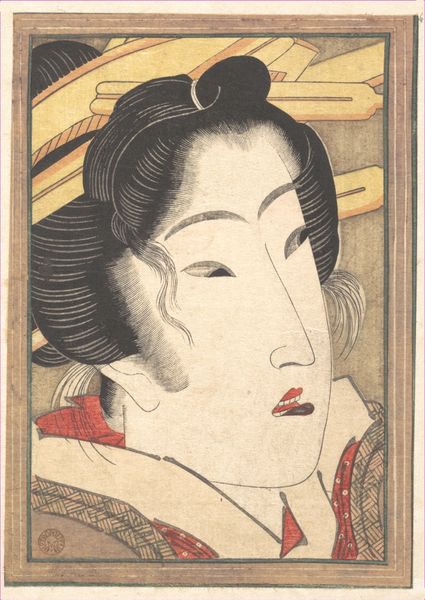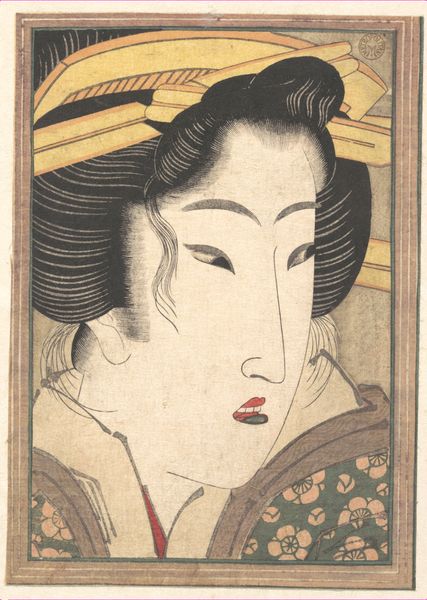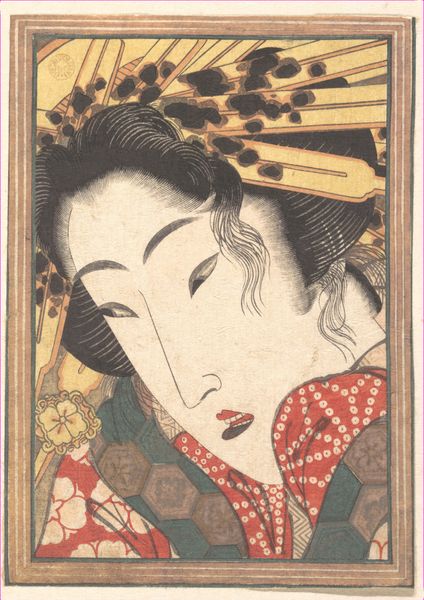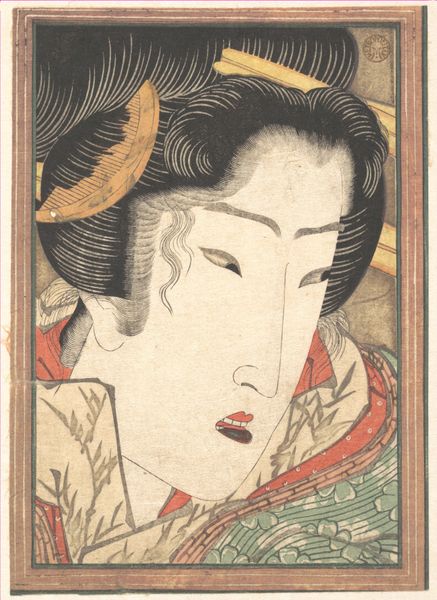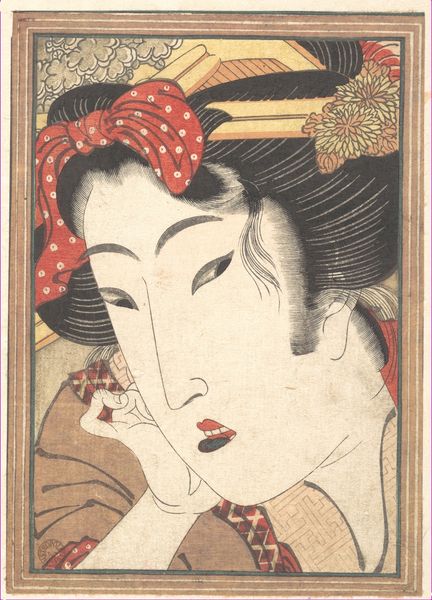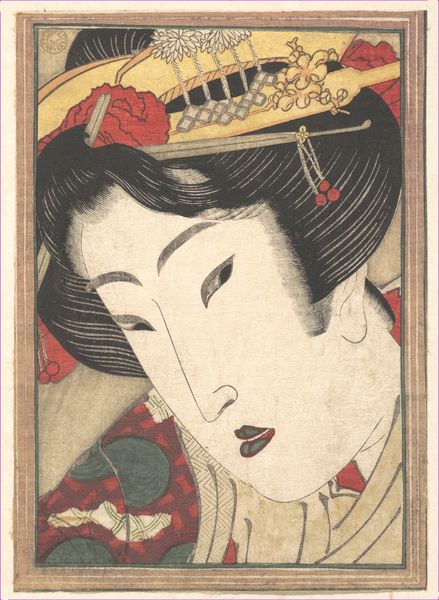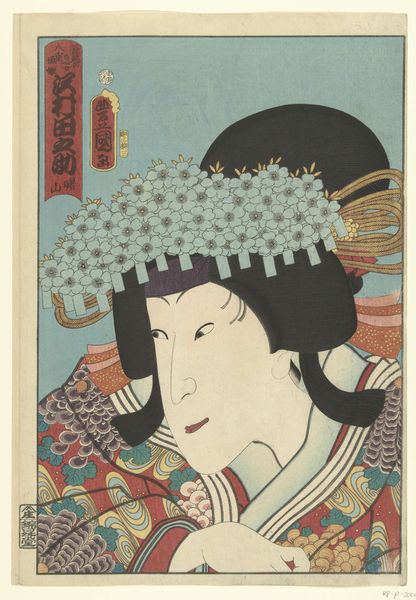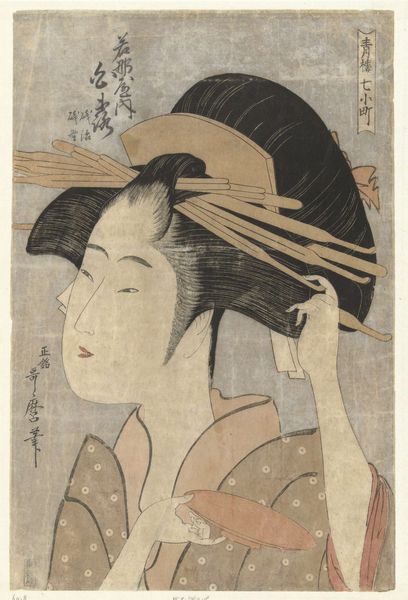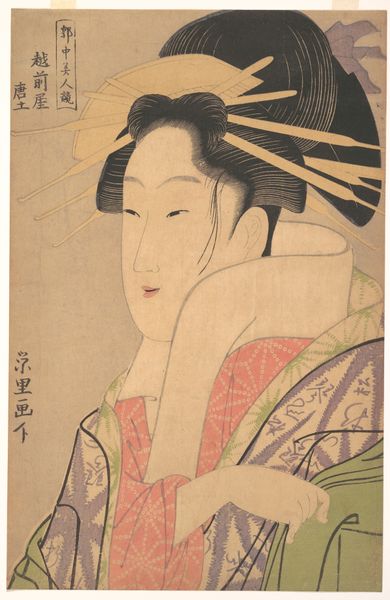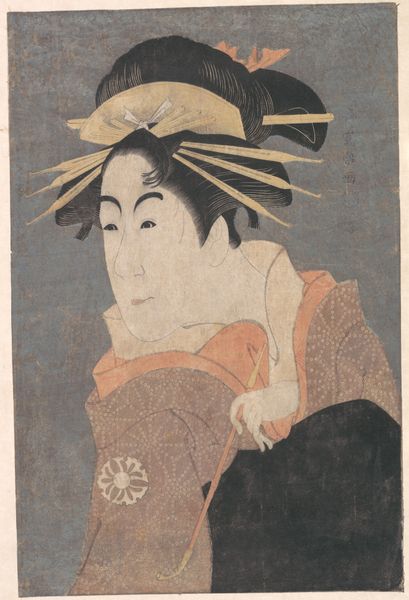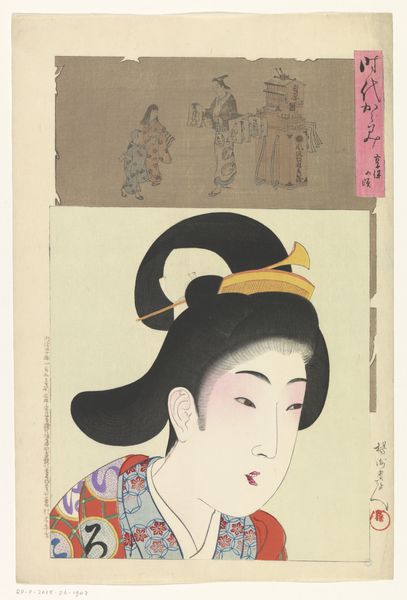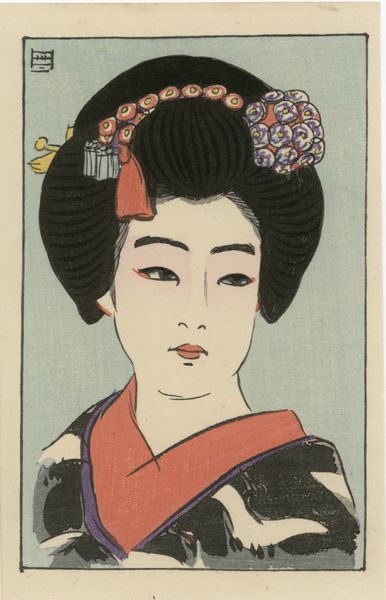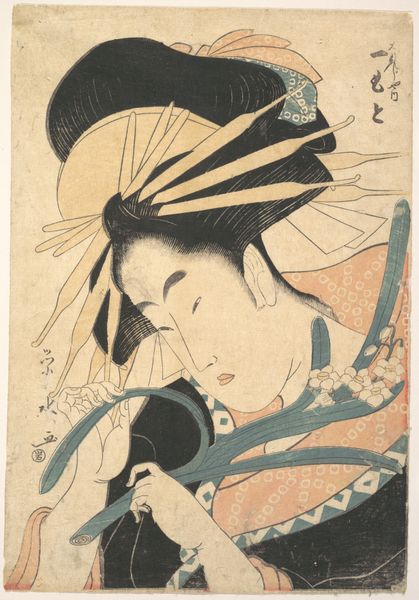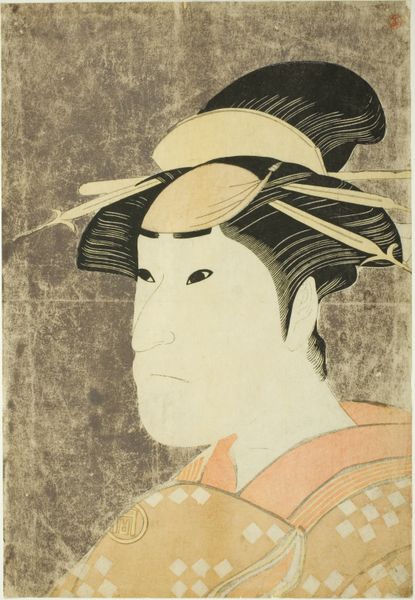
print, woodblock-print
#
portrait
# print
#
caricature
#
ukiyo-e
#
figuration
#
woodblock-print
#
erotic-art
Copyright: Public domain
Curator: This is Keisai Eisen's "Head of a Beauty," a woodblock print dating from around 1825. There's an arresting simplicity to its composition. Editor: Yes, initially, the effect is almost stark. The planes of her face are so smooth, juxtaposed against the elaborate hairstyle and the texture in the kimono. What’s fascinating is how much expressive detail is packed into such a restrained palette and line work. Curator: Indeed. Eisen was a master of ukiyo-e, or "pictures of the floating world," a genre deeply enmeshed with the pleasure districts and the commercial culture of Edo-period Japan. The prints were often made in workshops using a division of labor, with artists, carvers, printers, and publishers all contributing. This challenges the modern idea of the singular artistic genius, instead highlighting the collective effort behind art production. Editor: And it's that collaborative effort, that almost industrial process, that allows for such consistency and widespread distribution. Ukiyo-e weren't just art objects, but commodities – part of a much larger system of leisure and consumption, often reflecting the tastes of a burgeoning middle class with disposable income. Curator: Precisely. Furthermore, while portraying idealized beauty, ukiyo-e prints also implicitly engage with hierarchies and social performance. They illustrate evolving standards of beauty, and the way women navigated their position within a constrained patriarchal framework. The woodblock printing allows for reproducibility at relatively low costs, widening consumption access across different social groups. Editor: It's intriguing to think about who owned and displayed this print. What did it signify to them? Was it an object of aesthetic appreciation, a status symbol, or even something with erotic undertones as some scholars have suggested, or all three? This artwork really reflects art's participation within societal dialogues. Curator: Certainly a lot to consider, looking beyond the image’s aesthetic charm toward how social, material, and economic structures underpin the work itself. Editor: Exactly. It encourages a richer understanding of art history and its social relevance through the ages.
Comments
No comments
Be the first to comment and join the conversation on the ultimate creative platform.
